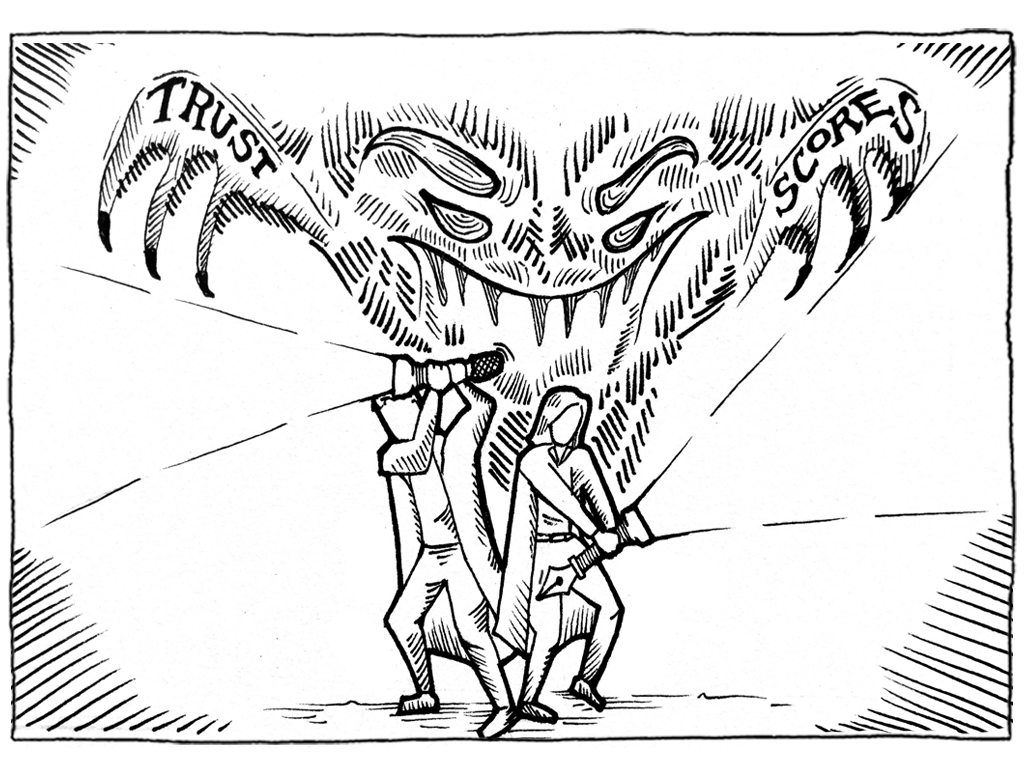From the newsrooms: Volcanoes, judges, and trust in journalism
A rundown of key events and issues the Philippine news media covered from June 12 to 17, 2023.

Three Restive Volcanoes
One angry volcano at a time would be reason enough to worry. But the country now has three restive peaks to watch – Mayon , Taal and Kanlaon. The public deserves more than assurances from the news media. They need quick answers to inevitable questions.
The news media gathered information from experts. In interviews, Philippine Institute for Volcanology and Seismology (Phivolcs) officials Teresito Bacolcol and Ma. Antonia Bornas described the restiveness of the three volcanoes as unrelated and independent of one another. The country has 24 active volcanoes. The terrifying prospect of two or more volcanoes going off at the same time is not at all unusual.
News coverage continues to be focused on the fabled slopes of Mayon. Reports highlighted the Phivolcs estimate that the “silent eruption,” also called “effusive,” could last for months. The Albay Provincial Safety Office said it was prepared for a 90-day evacuation scenario but would require the national government’s help. Residents within the six-kilometer “permanent danger zone” around Mayon have already been evacuated to designated centers; the estimated count of affected individuals was 20,000. Some reported the efforts of teachers to continue classes in the evacuation centers.
Media’s coverage of volcanic activity has gained from the experience of Taal’s eruption in 2020. Coverage hones in on the welfare of those affected, as current reports are doing. Media has to continue keeping track of the specific needs of those displaced, monitor the government’s coordination and response and call out gaps and shortcomings.
De Lima’s Trial
Former senator Leila de Lima remains in police detention after the Muntinlupa Regional Trial Court Branch 256 denied her petition for bail on June 7. The decision came as a shock to many because De Lima had been acquitted in two of the three drug cases filed against her. The acquittals raised hopes that she would be freed on bail and, subsequently, acquitted in the remaining case.
But a twist revealed more about the nature of the charges that have detained de Lima for six years: Three of de Lima’s co-accused filed separate petitions questioning the impartiality of the judge, Romeo Buenaventura; which forced him to inhibit himself from the case. Ronnie Dayan, de Lima’s former driver, said the judge failed to disclose that he was the brother of Emmanuel Buenaventura, the lawyer who aided Dayan in preparing a key piece of evidence, the affidavit that linked the former justice secretary to the drug trade inside the Bilibid prison.
Earlier, in May 2022, Dayan retracted his testimony against de Lima, saying he was coerced to execute the affidavit. Joenel Sanchez, another co-accused, said Attorney Buenaventura also lawyered for the late congressman Reynaldo Umali whose committee in the House of Representatives held the hearings on de Lima’s alleged drug involvement. Those hearings were part of what many say was the campaign to persecute and vilify the former chair of the Commission on Human Rights.
These petitions against Judge Buenaventura unfortunately did not gain traction in the media, and were reported in primetime news only by TV Patrol and in print only by Inquirer. The online counterparts of the other mainstream free TV channels and Manila broadsheets carried the news, without much discussion of the discovery of Buenaventura’s alleged conflict of interest.
Two opinion pieces in VERA Files and Rappler criticized Judge Buenaventura’s nondisclosure which prolonged the injustice against de Lima.
News reports must keep tight watch on the raffling of the case to a new judge; doing the necessary background check on their own.
Trust in News
The newsrooms largely ignored news about the media: The Reuters Institute for the Study of Journalism released the key findings of its annual report, showing Filipinos—38 percent of the survey’s respondents—still trust the news, particularly because of the need for information on COVID-19. But online and social media, the survey found, “remain the most popular” sources of news. Tiktok is the top source, with 21 percent of respondents saying they use the platform to access their news. This is a huge jump from two percent in the 2020 edition of the same survey.
The country report on the Philippines points out that “some independent outlets respected for their reporting on those in positions of power are often actively distrusted by supporters of the politicians in question and subject to coordinated harassment.” Rappler registered the lowest “trust score” – 33 percent – among the 15 Philippine media brands in the survey.
On social media, Nobel Peace Prize laureate and Rappler CEO Maria Ressa protested the survey, saying the release of the report could be used by political leaders. “It’s not enough to be sorry when your work is used to attack journalists in “inconvenient” countries. Journalism research has no integrity if it endangers journalists at risk,” she said.
Only ANC picked up on Ressa’s reaction and interviewed her for further insight. She said “the glaring part” of the report is its criticism of journalism and journalists without analyzing how technology companies have enabled the attacks for news organizations.
Journalist and journalism educator Yvonne Chua, who wrote a piece that accompanied the survey results, reiterated in a separate ANC interview that media outfits that have been attacked and demonized by the government are the ones that get low trust scores. She conceded that “bad actors” have abused and misused the trust scores.
So far, other newsrooms have been silent on the issues raised by the survey.
Leave a Reply